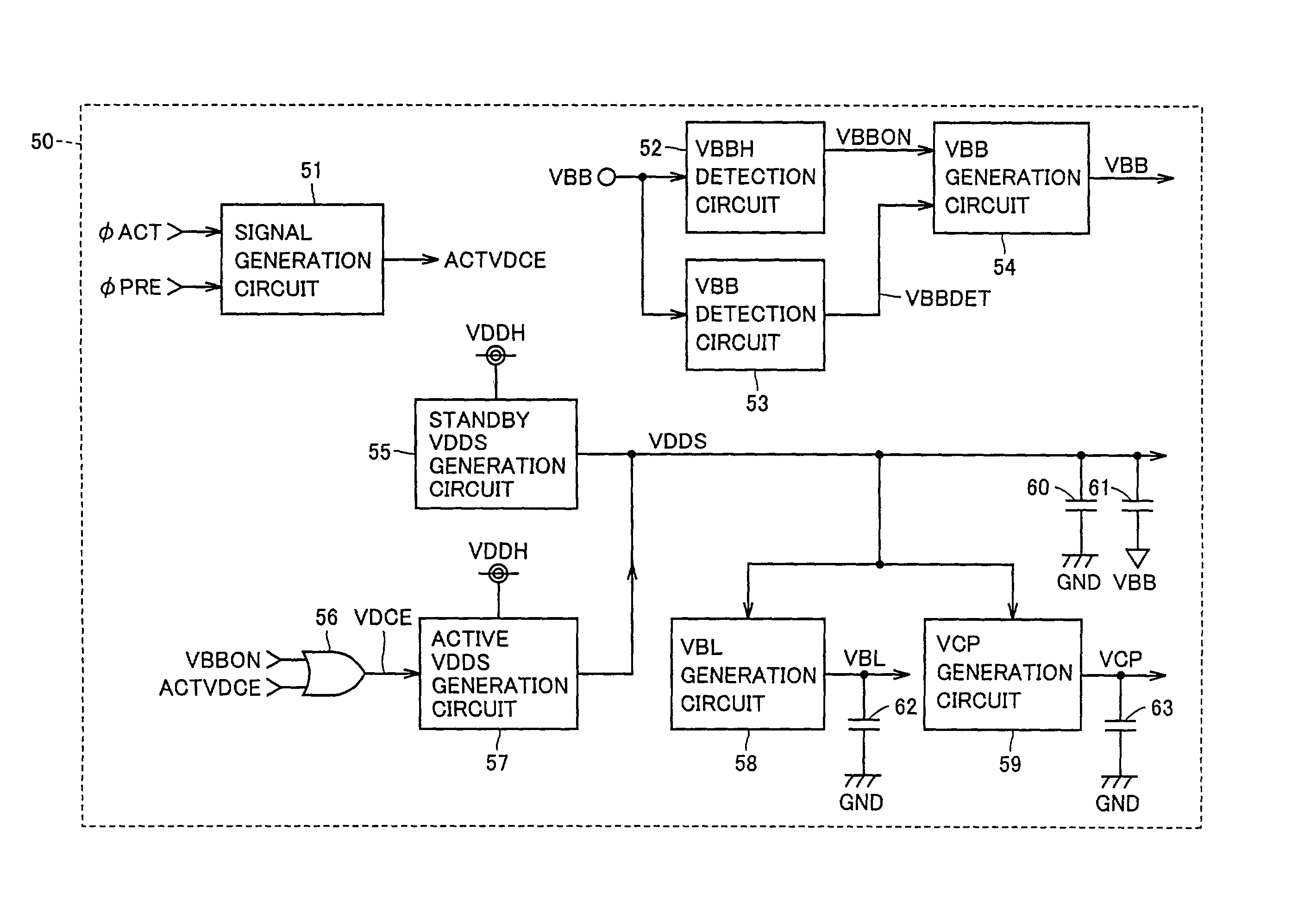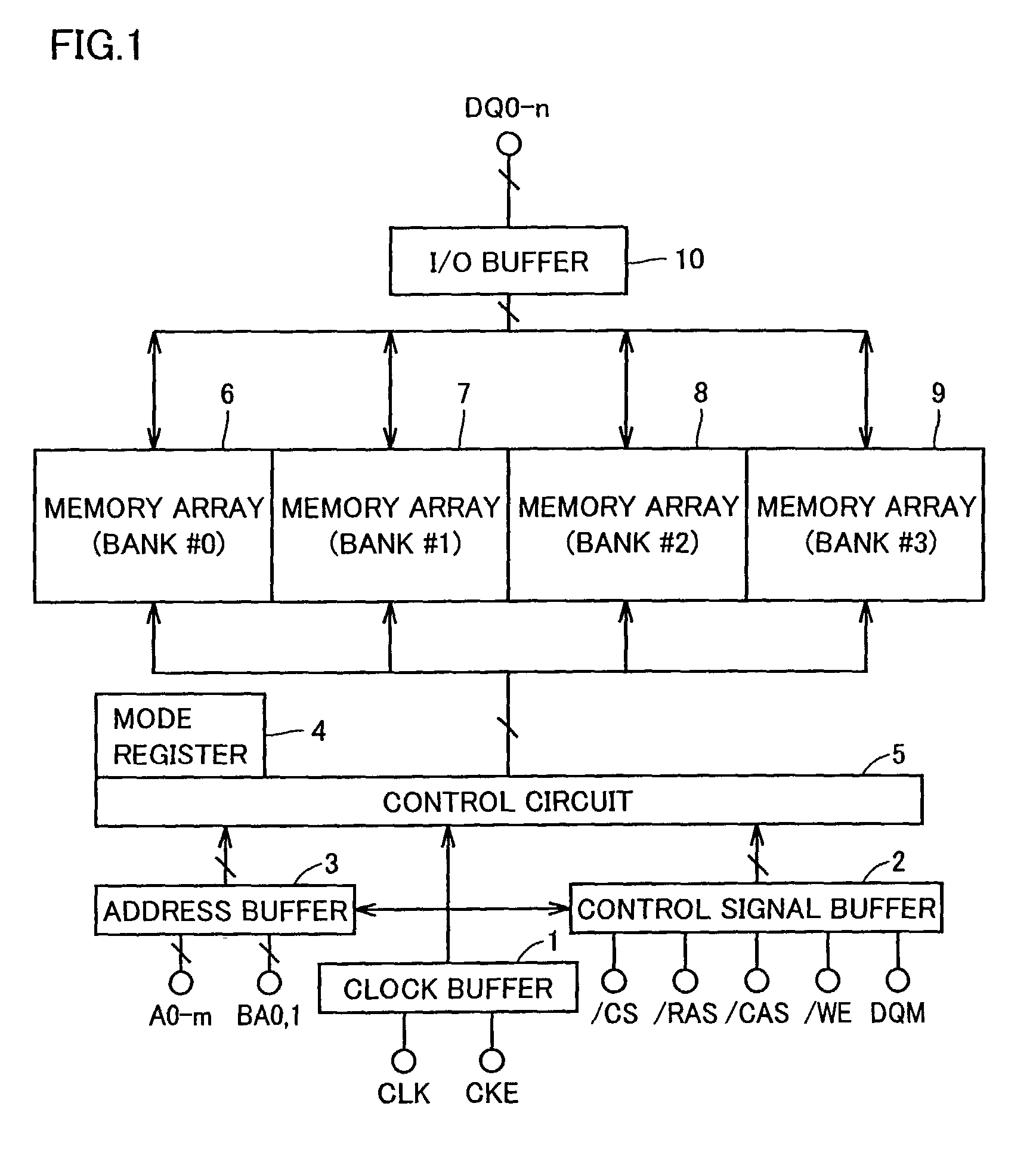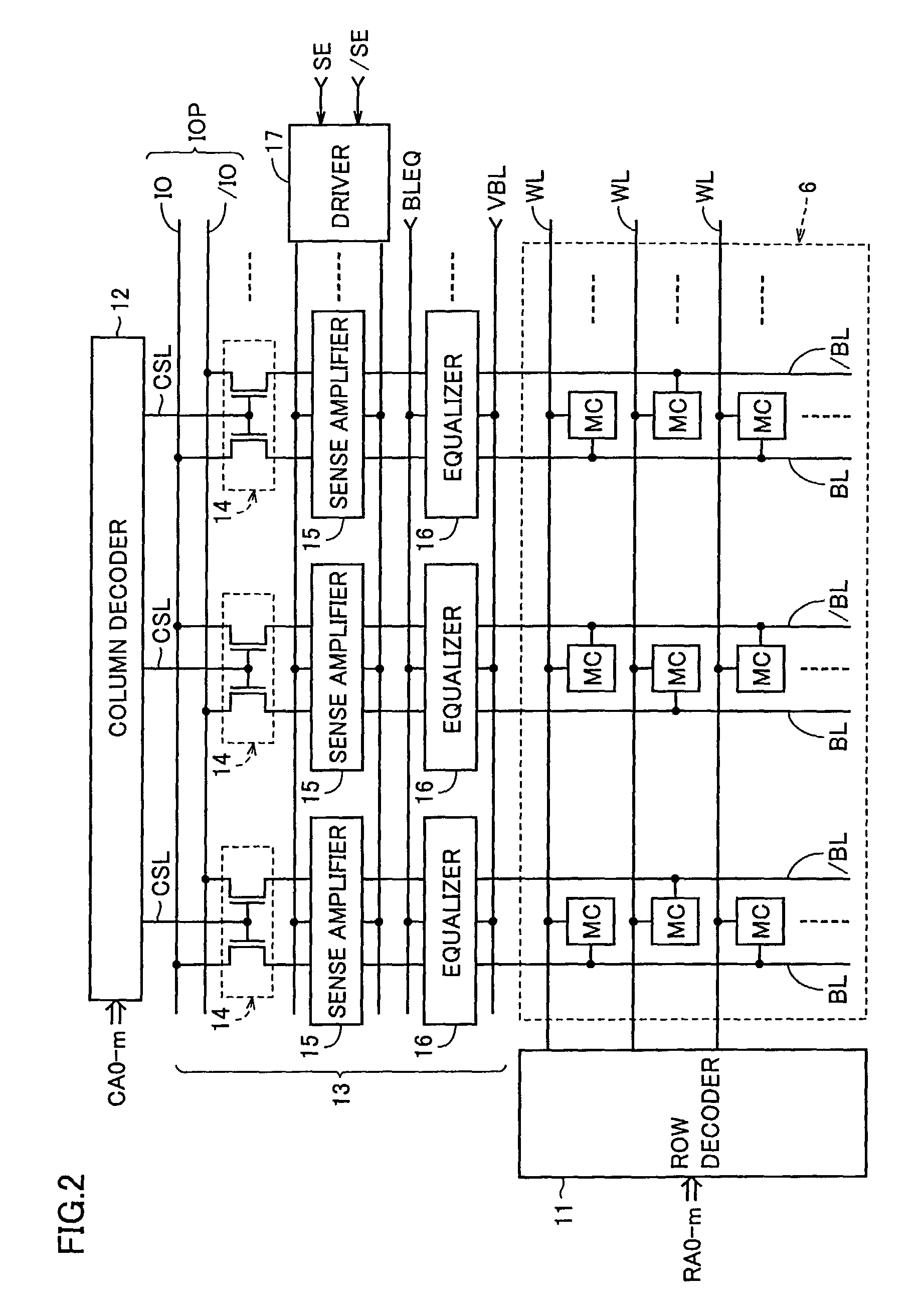Semiconductor device having standby mode and active mode
a technology of active mode and semiconductor device, which is applied in the direction of semiconductor devices, digital storage, instruments, etc., can solve the problems of large power consumption when a potential is applied, unstable disadvantageous increase of load capacitance of internal power supply potential vdds, etc., to suppress a standby current to be low, and stable raise an internal power supply potential
- Summary
- Abstract
- Description
- Claims
- Application Information
AI Technical Summary
Benefits of technology
Problems solved by technology
Method used
Image
Examples
first embodiment
[0058]FIG. 1 is a block diagram which shows the schematic configuration of a synchronous DRAM (referred to as “SDRAM” hereinafter) in the first embodiment according to the present invention. In FIG. 1, SDRAM includes a clock buffer 1, a control signal buffer 2, an address buffer 3, a mode register 4, a control circuit 5, four memory arrays 6 to 9 (banks #0 to #3) and an I / O buffer 10.
[0059]Clock buffer 1 is activated by an external control signal CKE, and transmits an external clock signal CLK to control signal buffer 2, address buffer 3 and control circuit 5. Control signal buffer 2 latches external control signals / CS, / RAS, / CAS, / WE and DQM synchronously with external clock signal CLK from clock buffer 1, and applies these control signals to control circuit 5. Address buffer 3 latches external address signals A0 to Am (where 0 is an integer not smaller than 0) and bank select signals BA0 and BA1 synchronously with external clock signal CLK from clock buffer 1, and applies these ...
second embodiment
[0096]FIG. 13 is a circuit block diagram which shows the important parts of the internal potential generation circuit of SDRAM in the second embodiment according to the present invention. Referring to FIG. 13, this internal potential generation circuit differs from that shown in FIG. 12 in that a POR generation circuit 80 and a signal generation circuit 81 are added.
[0097]As shown in FIG. 14, POR generation circuit 80 includes a resistance element 82 and N-channel MOS transistors 83 and 84 which are connected in series between an external power supply potential VDDH line and a ground potential GND line, and an inverter 85. The gate of N-channel MOS transistor 83 receives external power supply potential VDDH. The gate of N-channel MOS transistor 84 is connected to the drain thereof. N-channel MOS transistor 84 constitutes a diode element. A signal which appears at a node N82 between resistance element 82 and N-channel MOS transistor 83 is inverted by inverter 85 and become a power-on...
third embodiment
[0106]Signal generation circuit 81 in the second embodiment is a circuit which sets signal SDVCE at “H” level only during a period after the level of signal ZPOR is raised to “H” level and extending until signal VBBDET is lowered to “L” level. Therefore, as shown in FIG. 17, if the operation of VBB detection circuit 53 becomes unstable and signal VBBDET rings between “H” level and “L” level, then the period in which signals STVDCE and VCDCE are at “H” level becomes short, so that the time period in which active VDDS generation circuit 57 is activated becomes short and internal power supply potential VDDS and negative potential VBB change greatly, as in the case of the conventional art. The third embodiment is intended to solve these disadvantages.
[0107]FIG. 18 is a circuit block diagram which shows the important parts of the internal potential generation circuit of SDRAM in the third embodiment according to the present invention. Referring to FIG. 18, this internal potential generat...
PUM
 Login to View More
Login to View More Abstract
Description
Claims
Application Information
 Login to View More
Login to View More - R&D
- Intellectual Property
- Life Sciences
- Materials
- Tech Scout
- Unparalleled Data Quality
- Higher Quality Content
- 60% Fewer Hallucinations
Browse by: Latest US Patents, China's latest patents, Technical Efficacy Thesaurus, Application Domain, Technology Topic, Popular Technical Reports.
© 2025 PatSnap. All rights reserved.Legal|Privacy policy|Modern Slavery Act Transparency Statement|Sitemap|About US| Contact US: help@patsnap.com



